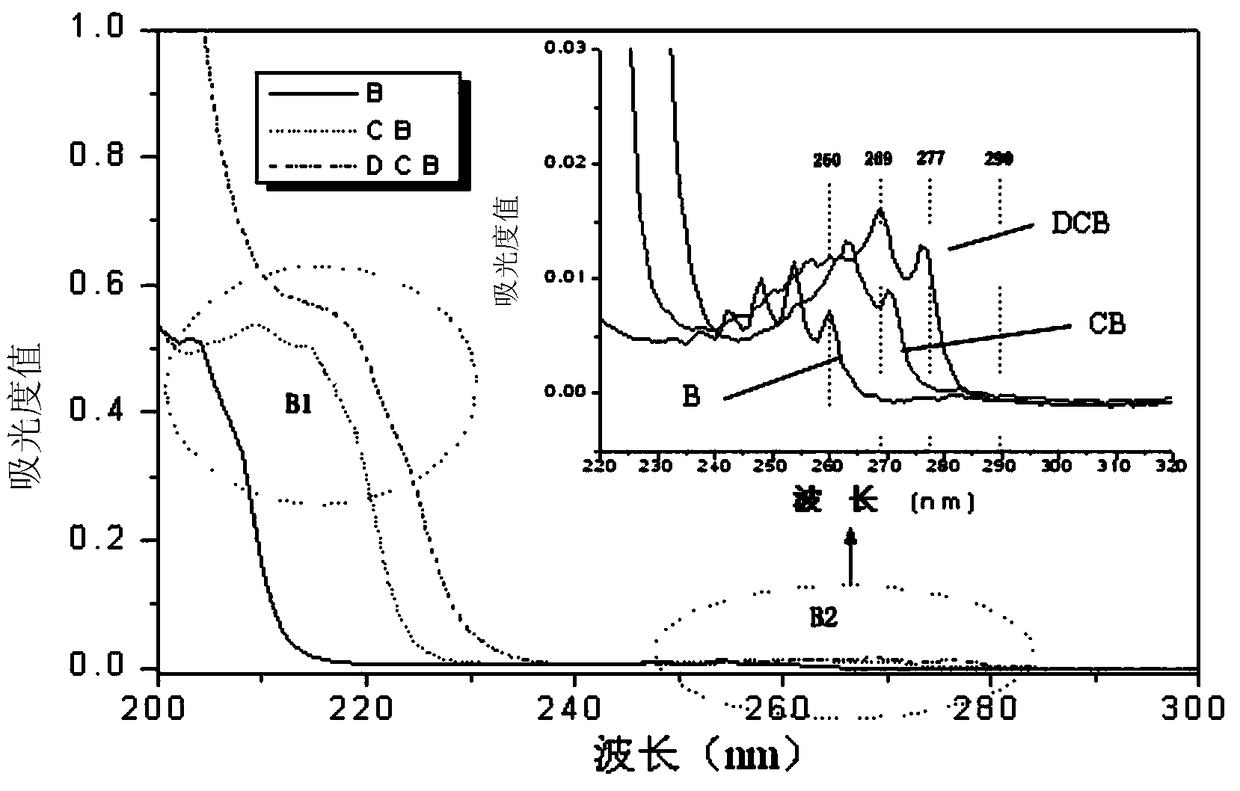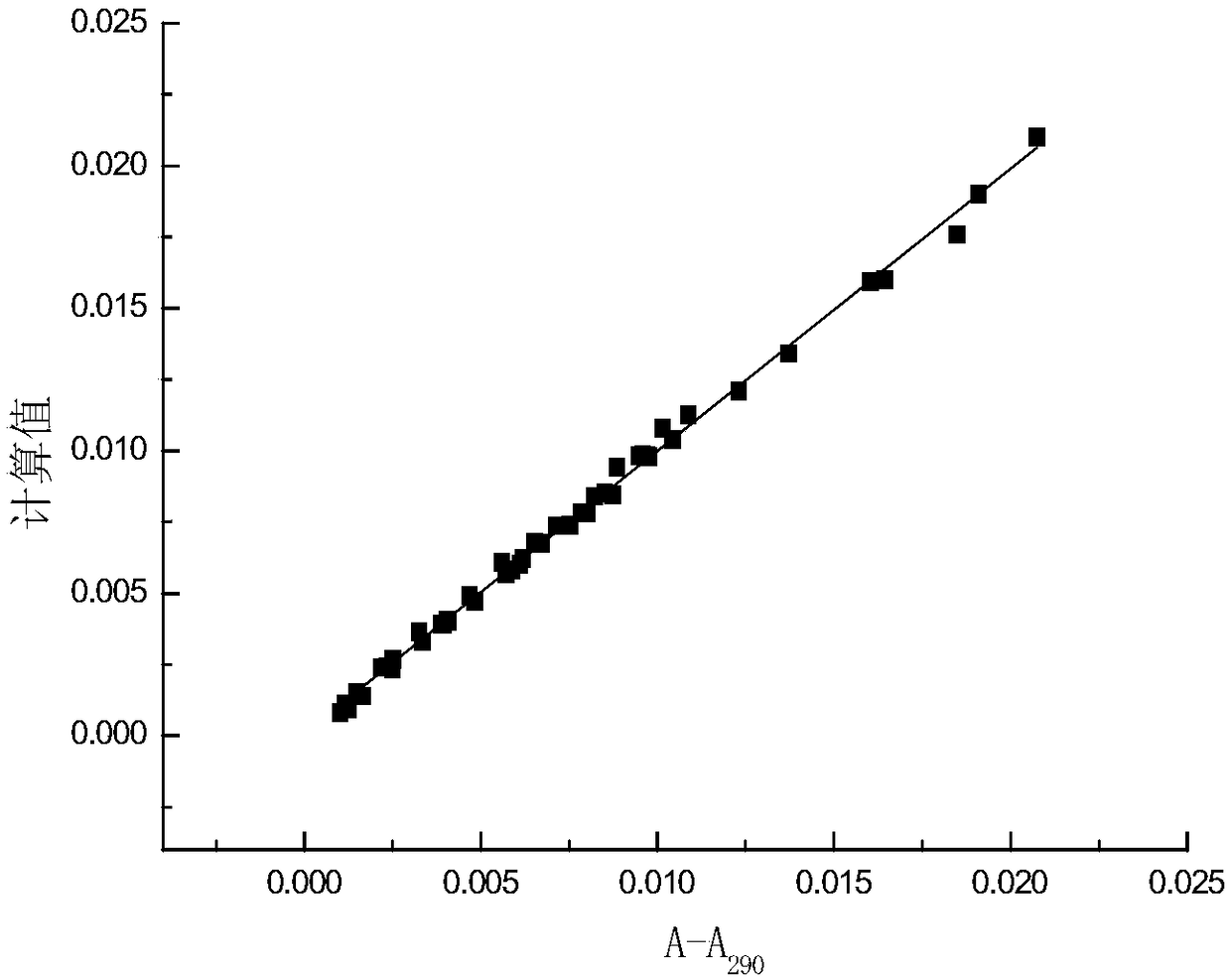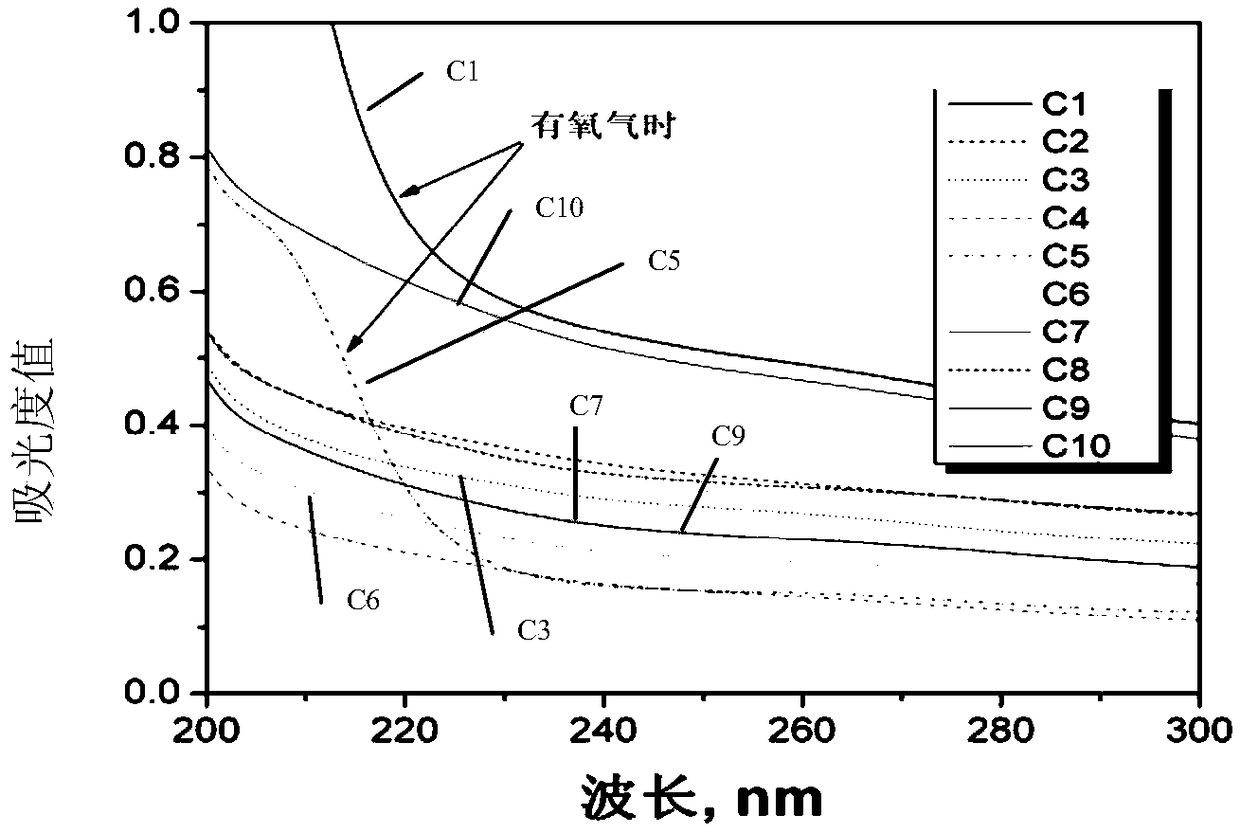A Five-Wavelength Ultraviolet Spectroscopy Method for Evaluating the Reduction Performance of Metal Catalytic Reductants
A technology of metal catalysis and ultraviolet spectroscopy, which is applied in the field of evaluating the treatment effect of metal catalytic reductant catalytic reduction of dichlorobenzene in simulated wastewater, and evaluating the reducing ability of metal catalytic reducing agent, so as to achieve the effect of rapid evaluation of reducing ability.
- Summary
- Abstract
- Description
- Claims
- Application Information
AI Technical Summary
Problems solved by technology
Method used
Image
Examples
Embodiment 1
[0102] Embodiment 1 evaluates self-made metal catalytic reducing agent reducing effect
[0103] Put 31ml of 0.08mmol / L dichlorobenzene solution in a 20ml serum bottle (without headspace, oxygen isolation), add 0.05g self-made microfibrillated cellulose supported metal catalytic reducing agent (the molar ratio of nanometer Fe / Ni is 8:2 ), put it on a magnetic stirrer, the reaction temperature is 30°C, stop the reaction at different times, let it stand for 15 minutes, take the supernatant for ultraviolet light detection, and then bring it into the mathematical Formula (8) (9) (10), calculate the concentration of DCB, CB and B, see the experimental results Figure 4 .
[0104] From Figure 4 It can be seen that as the reaction proceeds, the concentration of dichlorobenzene decreases gradually, and is almost 0 after 3 hours, while benzene has been increasing gradually, and the concentration of chlorobenzene has not been high, indicating that the final product of the catalytic re...
Embodiment 2
[0105] Embodiment 2 evaluates commercially available certain metal catalytic reducing agent reduction effect
[0106] Put 31ml of 0.08mmol / L dichlorobenzene solution in a 20ml serum bottle (without headspace, oxygen isolation), add 0.05g of commercially available nano-iron powder, place it on a magnetic stirrer, react at a temperature of 30°C, and stop at different times React, let it stand for 15 minutes, take the supernatant for ultraviolet light detection, and then bring the absorbance values at 260, 269, 277, 290 and 300nm into the mathematical formula (8) (9) (10) to calculate the DCB, CB and B Concentration, the experimental results see Figure 5 .
[0107] From Figure 5 It can be seen that after reduction, the concentration of dichlorobenzene is very high, but the concentration of benzene is not high, indicating that the reduction ability of commercially available nano-iron powder is not as good as that of self-made nano-catalyzed reducing agent.
Embodiment 3
[0108] Embodiment 3 evaluates self-made metal catalytic reducing agent reducing effect
[0109] Put 31ml of 0.08mmol / L dichlorobenzene solution in a 20ml serum bottle (without headspace, oxygen isolation), add 0.05g self-made microfibrillated cellulose supported metal catalytic reducing agent (the molar ratio of nanometer Fe / Ni is 8:2 ), put it on a magnetic stirrer, the reaction temperature is 20°C, stop the reaction at different times, let it stand for 15 minutes, take the supernatant for ultraviolet light detection, and then bring it into the mathematical Formula (8) (9) (10), calculate the concentration of DCB, CB and B, see the experimental results Figure 6 .
[0110] From Figure 6 It can be seen that the low reaction temperature is unfavorable to the reduction reaction, the concentration of dichlorobenzene is still very high, and the amount of benzene generated is very little.
[0111] Therefore, according to this method, the reducing performance of the catalytic re...
PUM
 Login to View More
Login to View More Abstract
Description
Claims
Application Information
 Login to View More
Login to View More - R&D
- Intellectual Property
- Life Sciences
- Materials
- Tech Scout
- Unparalleled Data Quality
- Higher Quality Content
- 60% Fewer Hallucinations
Browse by: Latest US Patents, China's latest patents, Technical Efficacy Thesaurus, Application Domain, Technology Topic, Popular Technical Reports.
© 2025 PatSnap. All rights reserved.Legal|Privacy policy|Modern Slavery Act Transparency Statement|Sitemap|About US| Contact US: help@patsnap.com



